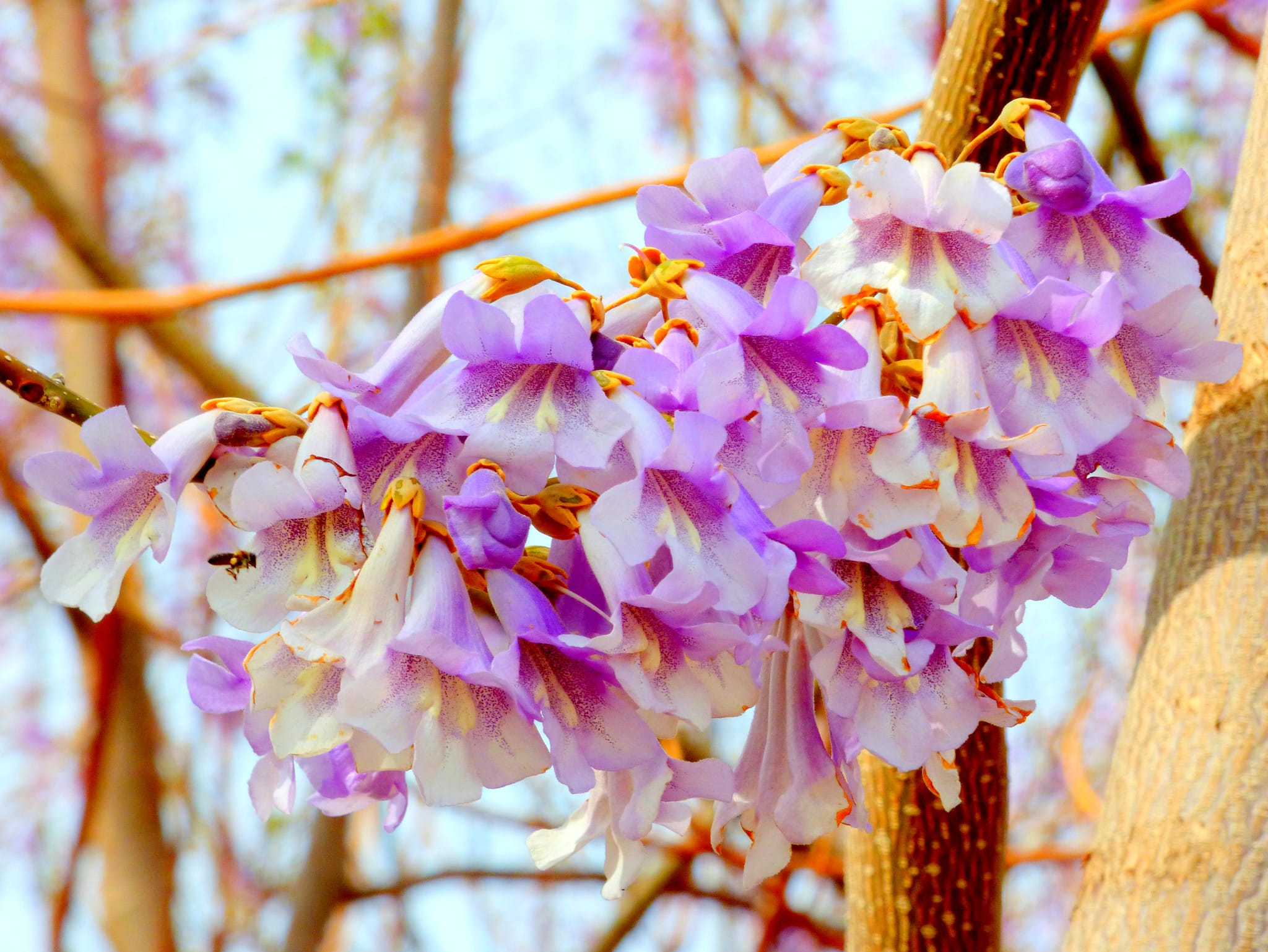
Image - Flickr / Salomé Bielsa
Paulownia trees are fast-growing plants and often flower at a very young age.. If conditions are good, they can gain 30 to 40 inches in height each year, which is a lot compared to what other trees tend to grow.
Its main attraction are, without a doubt, the flowers. These sprout before the leaves do, which makes it easy to see them. But, where do they come from?
What is the origin of the Paulownia?
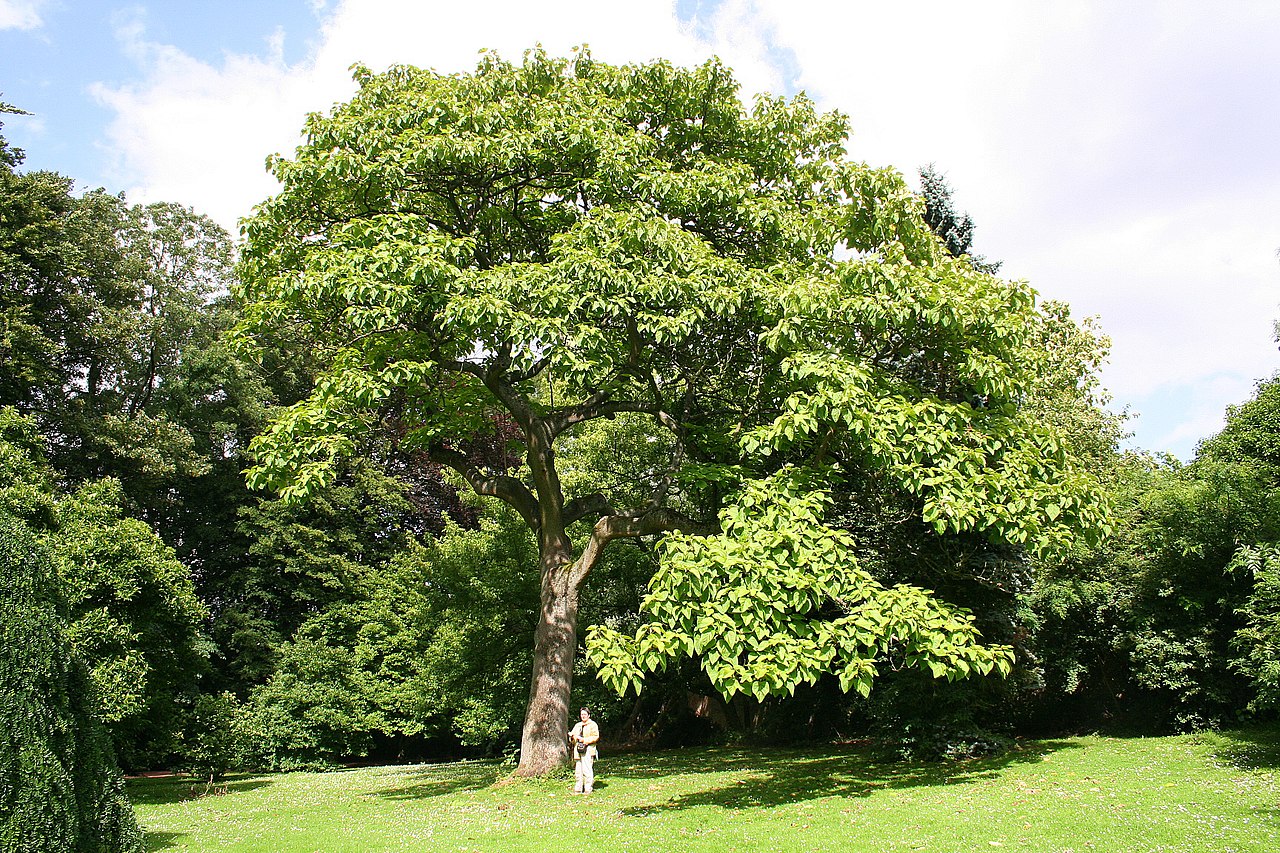
Image – Wikimedia/Jean-Pol GRANDMONT // paulownia tomentosa
These trees grow in east asia. They are native to China, as well as Japan and Korea. They are also found in Vietnam and Laos. Away from their places of origin, they are widely cultivated in places where the climate is temperate, with the four well-differentiated seasons, with generally mild summers and cool winters.
As a curiosity, let me tell you that They are the emblem of the Japanese government, country in which they are known as kiri (a name that has crossed borders, since it is also widely used in Spanish-speaking countries).
As they are?
They are deciduous trees that, as anticipated, its growth rate is rapid; in fact, they can reach a height of approximately 10-20 meters. We must also take into account its crown, which is quite wide in adult specimens, measuring between 4 and 7 meters in diameter.
The leaves are also large, measuring about 40 centimeters wide by more or less the same length. The blade is somewhat divided into two lobes, and has a long petiole. If we talk now about the flowers, these sprout in pyramidal-shaped inflorescences in groups of up to 8 purple flowers. Once they fall, the plant produces the fruits, which are capsules with a large number of small, winged seeds.
Main species of paulownia
It is estimated that there are about 6 different species of Paulownia, which are the following:
Paulownia catalpifolia

Image - Flickr / Paco Garin
It is a species native to eastern China, which reaches a height of about 15 meters. It is deciduous, and loses its leaves during the fall or winter. Its seeds germinate quite well if sown in spring, and seedling growth is rapid. But yes, it is important to know that to survive it needs to feel the passing of the seasons, so it should not be grown in tropical places.
paulownia elongata
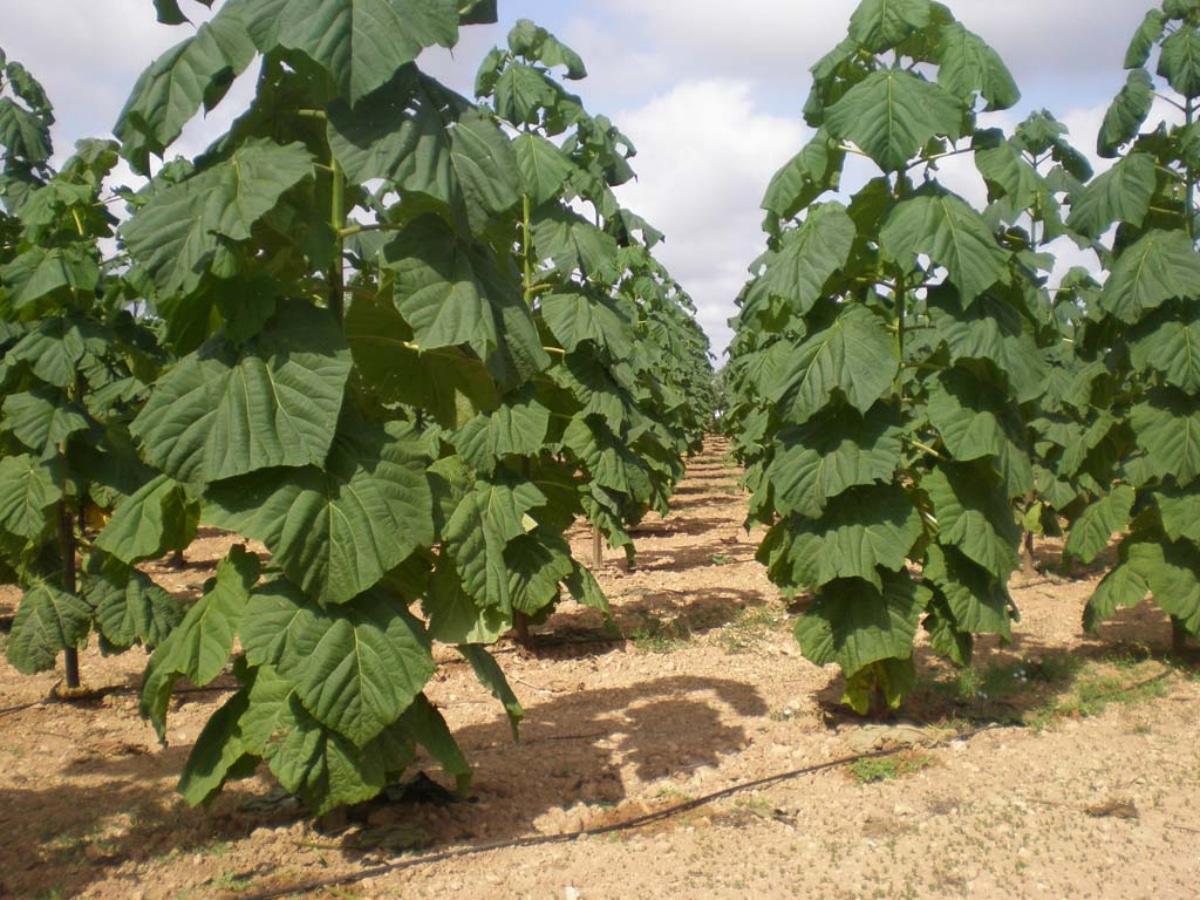
Image – Wikimedia/Bazsek
It is a species that is beginning to be well known in the West. It is also deciduous, but it is one of those that reach a greater height: in its case, we are talking about can measure 28 meters. Quite fast growing, it can reach 12-15 meters in height in about 5 years. It is also very suitable for subtropical or warm-temperate climates (such as the Mediterranean).
Paulownia fortunei
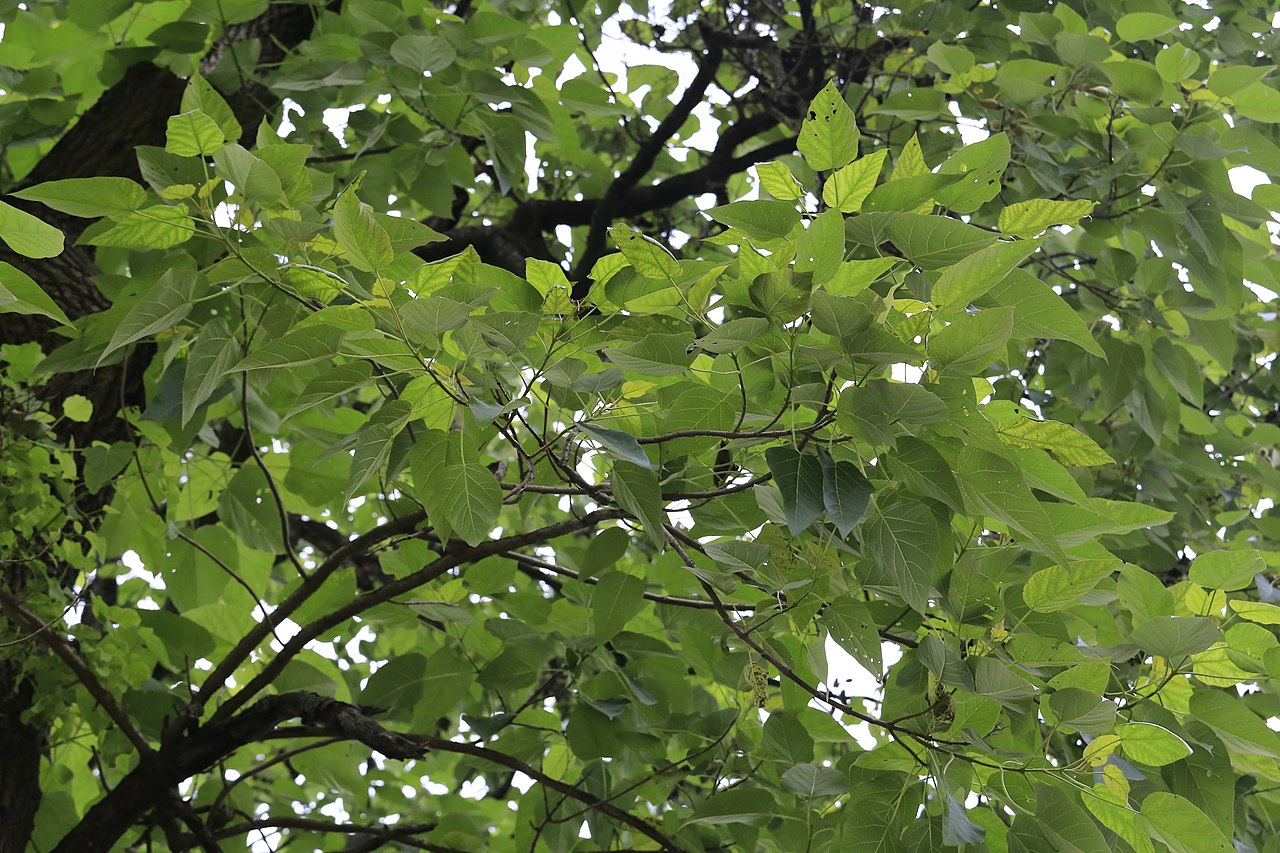
Image – Wikimedia/Zhangzhugang
It is a deciduous species native to southeastern China, Laos, and Vietnam that reaches a height of 15 to 20 meters. It has a pyramidal crown, and the leaves are oval, reaching about 20 centimeters long. Also, you should know that, like the other paulonias, it supports moderate frosts reasonably well.
Paulownia kawakamii
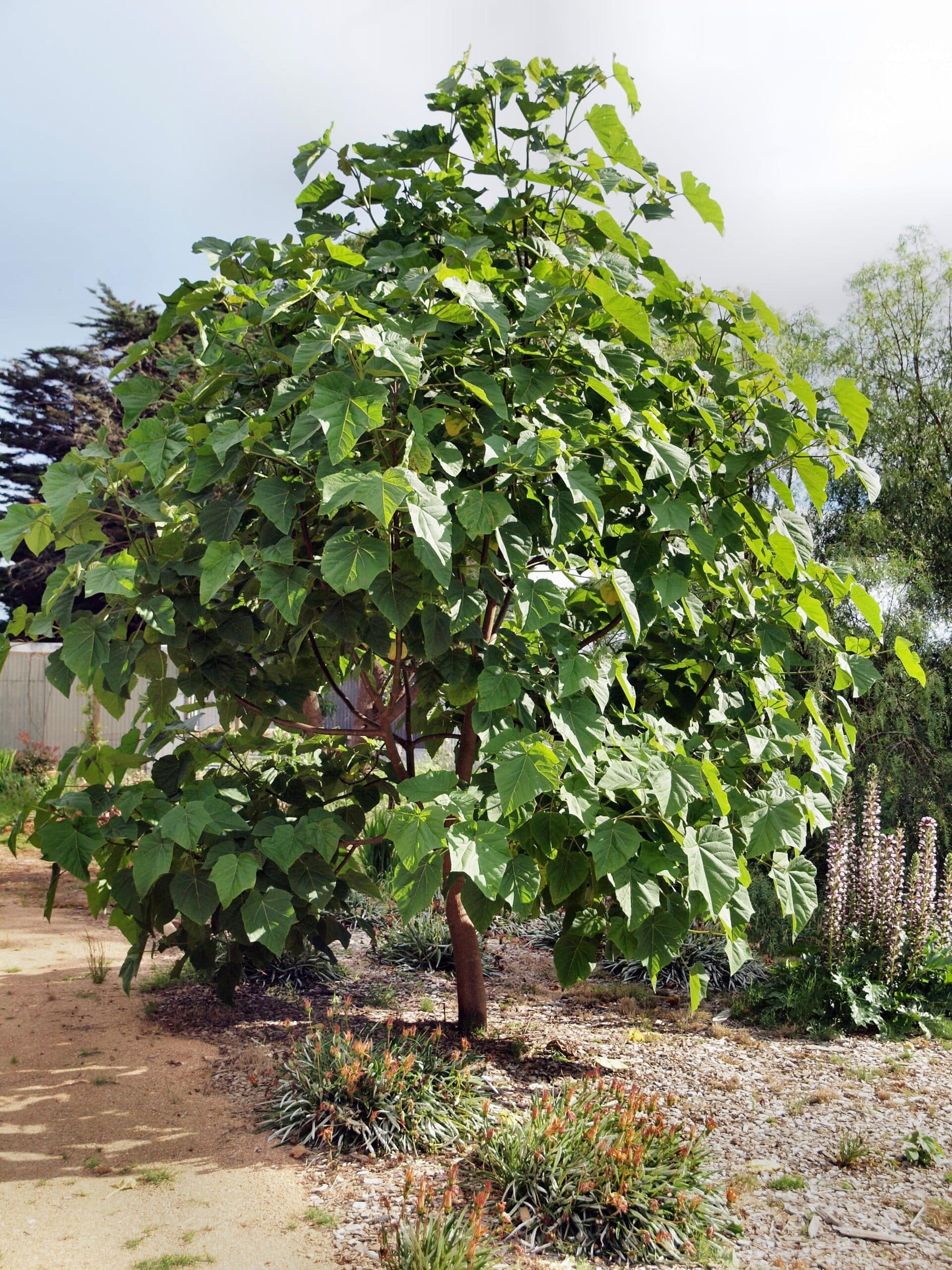
Image - Wikimedia / Groogle
It is a species of deciduous paulonia that It only reaches a height of approximately 6 meters, so being smaller than others, it can be grown in small to medium-sized gardens. It is native to Taiwan, and its cup is rounded. It supports the cold, but not as much as the others: only up to -5ºC.
Taiwanese Paulownia

Image – moretrees.co.uk
It is a deciduous tree native to China, mainly Taiwan. Its trunk rises about 5 meters above ground level., and the cup is more or less rounded. In its place of origin, it usually hybridizes with Paulownia kawakamii and with Paulownia fortuneiwith whom it shares a habitat. It resists the cold as long as it is not extreme.
paulownia tomentosa
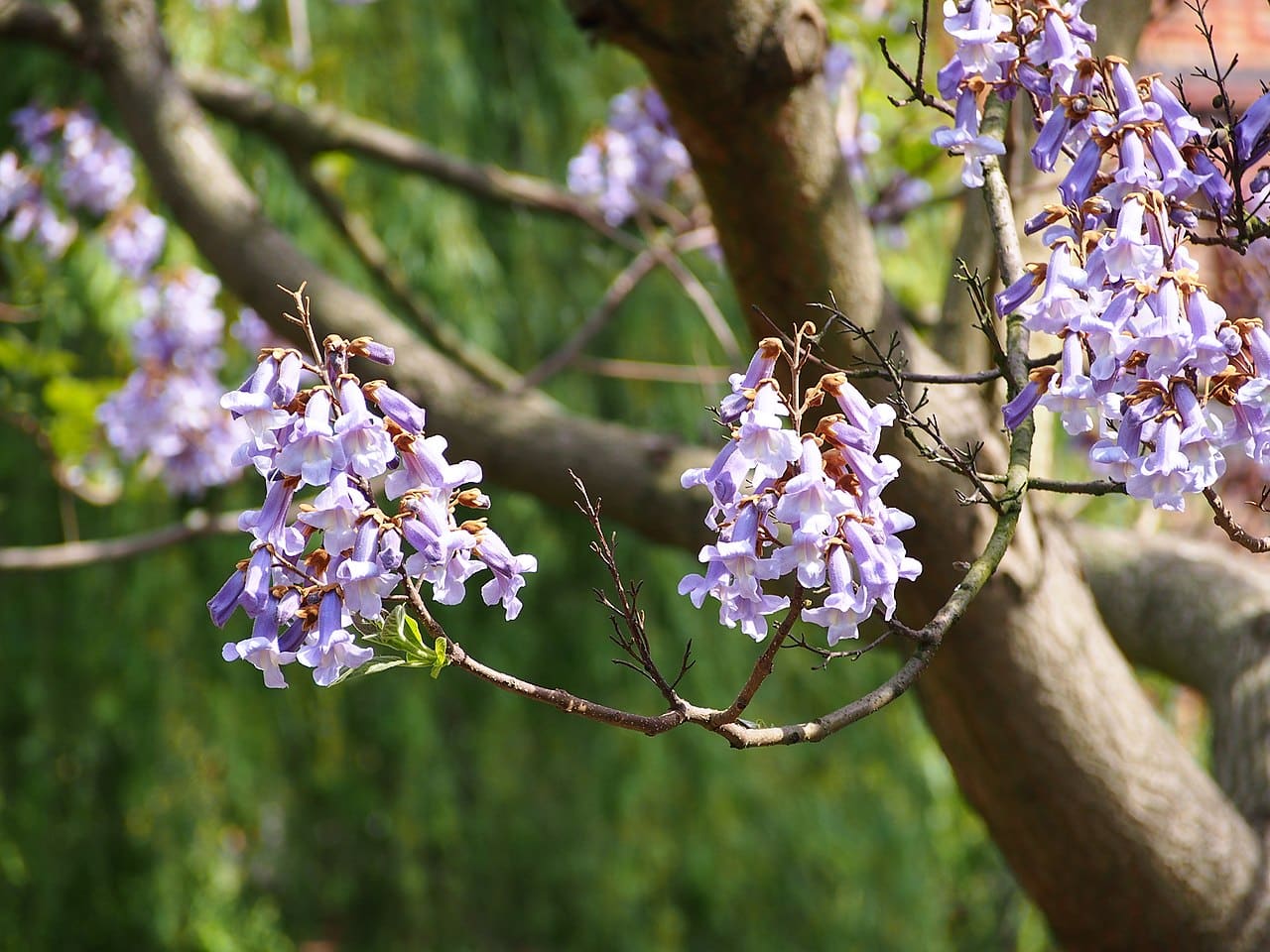
Image - Wikimedia / Agnieszka Kwiecień, Nova
La paulownia tomentosa It is the best known species. It is originally from China, and It is a deciduous tree that reaches a height of 20 meters. Its crown is very wide, as it reaches approximately 6 meters. This is made up of large leaves, since they are 40 centimeters long. Its flowers appear in terminal inflorescences in spring, and are lilac in color. It resists frosts down to -20ºC.
What uses do paulownias have?
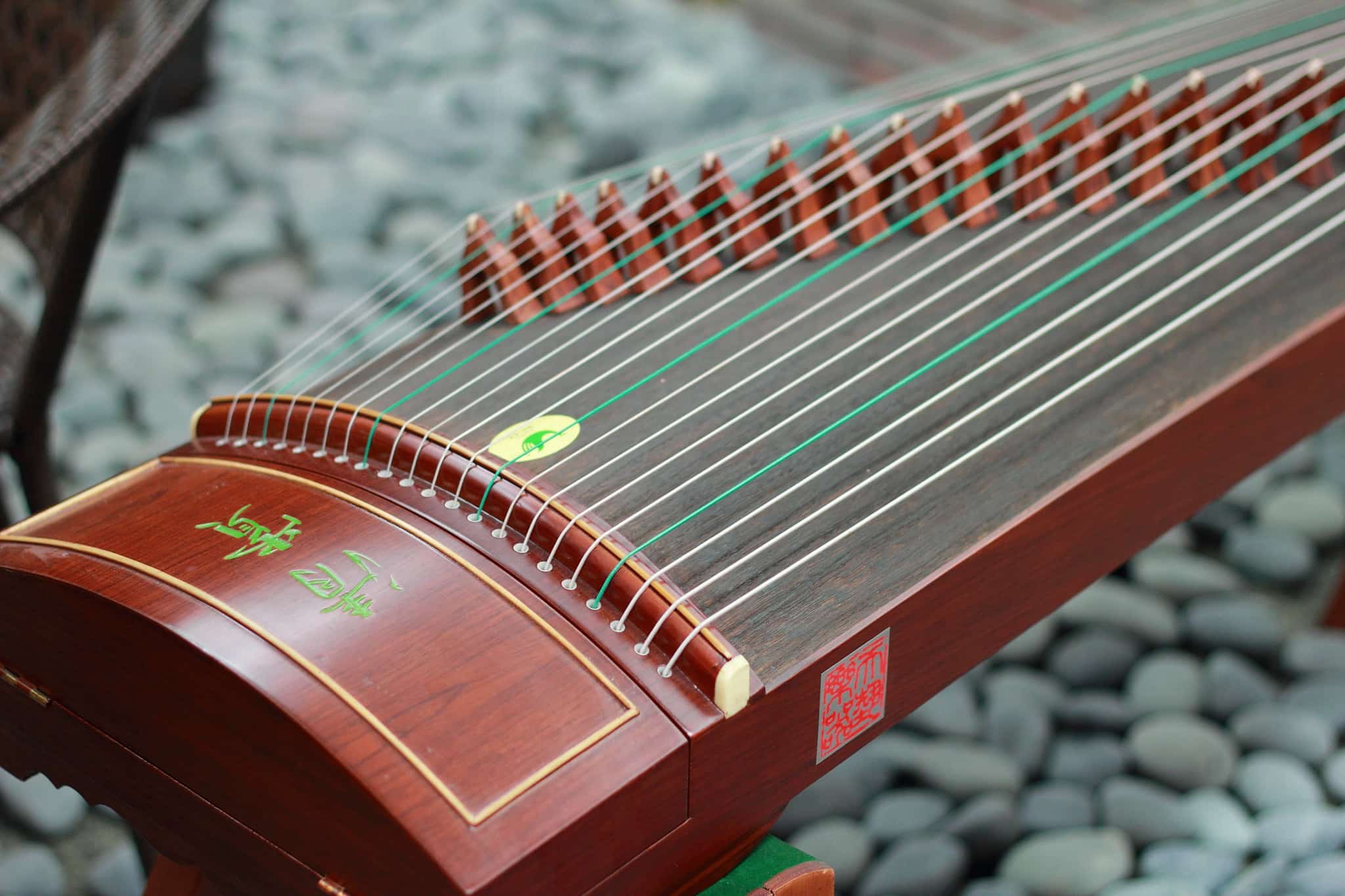
Image – Flickr/Lien Bryan™ // Guzheng
First we will talk about the uses they have in their places of origin. And it is that in the Asian countries where they come from, mainly in China, Japan and Korea, its wood is used to make traditional musical instruments, such as guzheng (of Chinese origin) or koto (of Japanese origin). In addition, in China they are used for reforestation, since they grow fast and are not very demanding as far as the type of land is concerned. Of course, they also serve as ornamental plants, which is the main use we give them in the West, but not the only one.
Little by little, wood is also being used in the manufacture of musical instruments., such as low-cost electric guitars. However, they are also splendid as »ecosystem helpers», since their flowers are melliferous; the roots prevent soil erosion and can also grow in those lands where nutrients are scarce; And as if that were not enough, the leaves contribute to improving air quality -like all plants, actually, but since the paulownia leaves are very large and numerous, the effect is more noticeable-.
Yes, they are not all terrain trees. Paulownias, as plants that they are, also have their needs and, in fact, they will not be able to live in places where there is little rain, or where the climate is warm throughout the year. To this, we must also add something that I consider very important: the best way to care for and protect an ecosystem is by planting native plants; not alien No matter how good or beautiful an exotic tree is, it will always be better to opt for species native to our region.